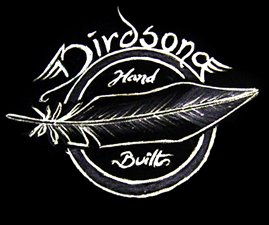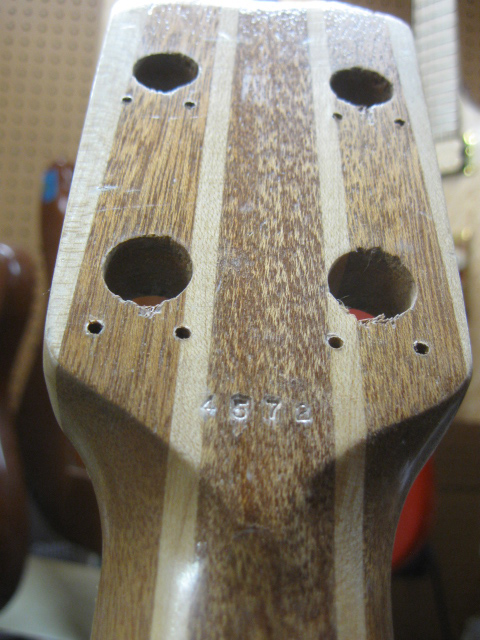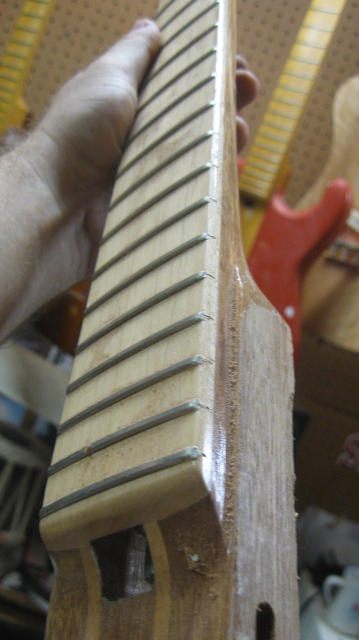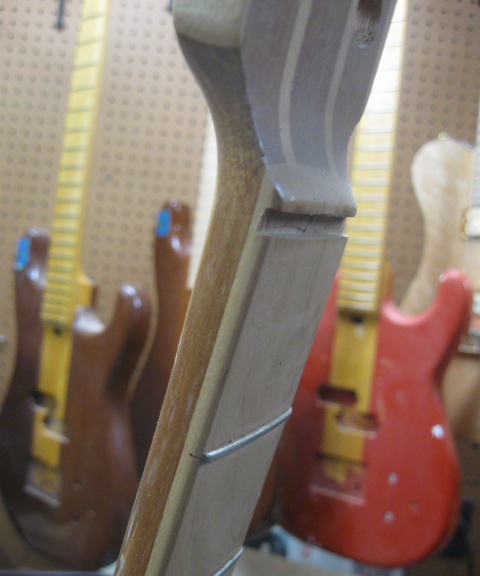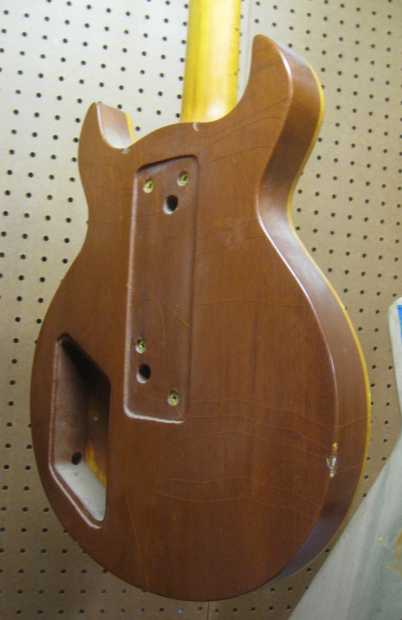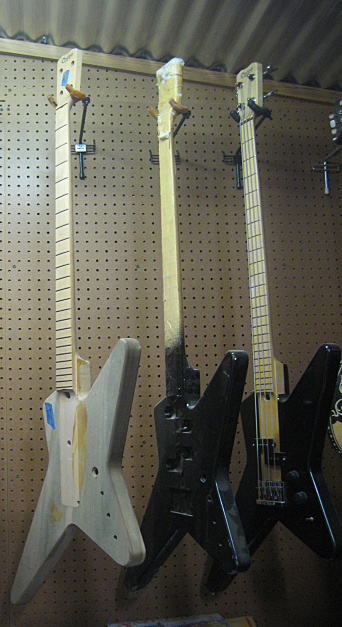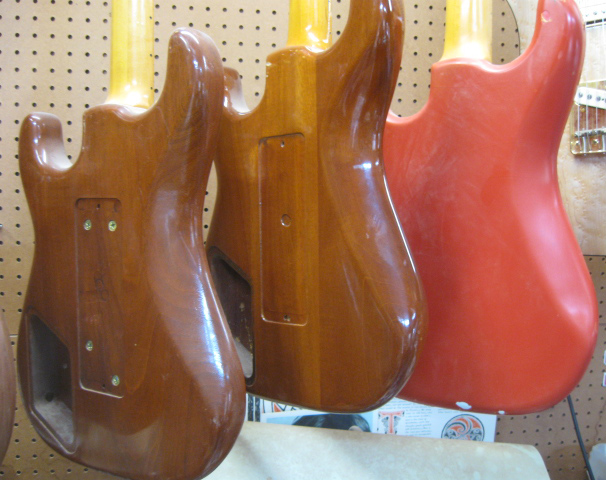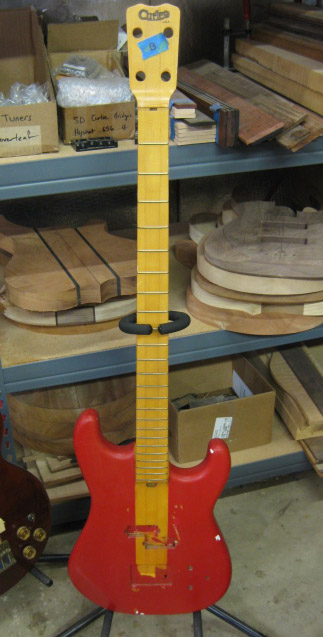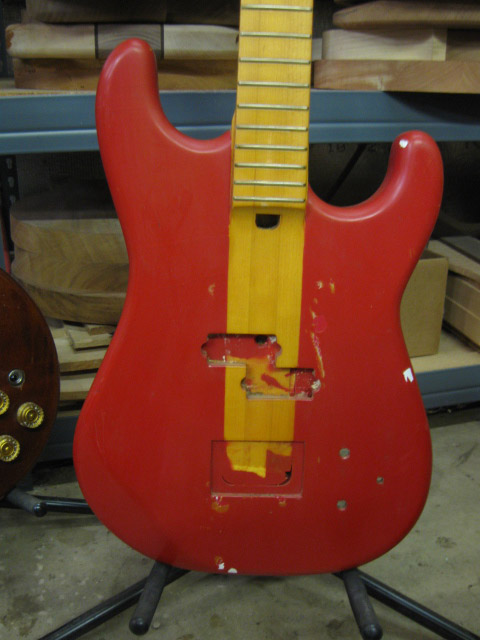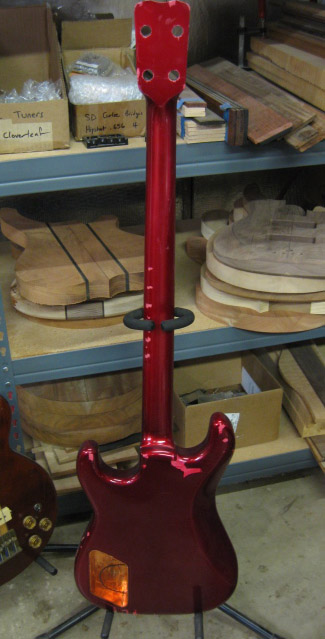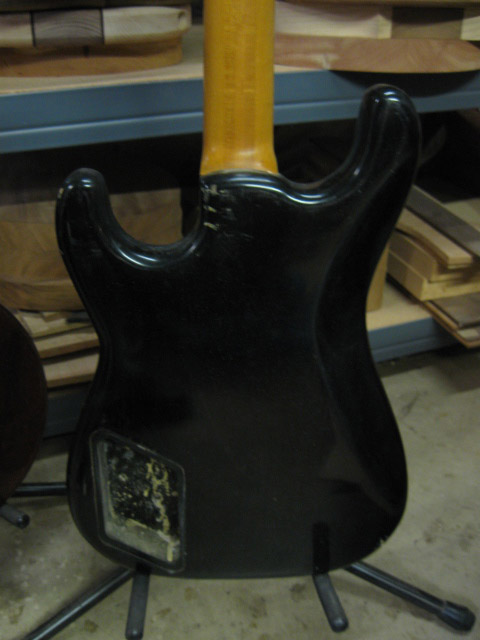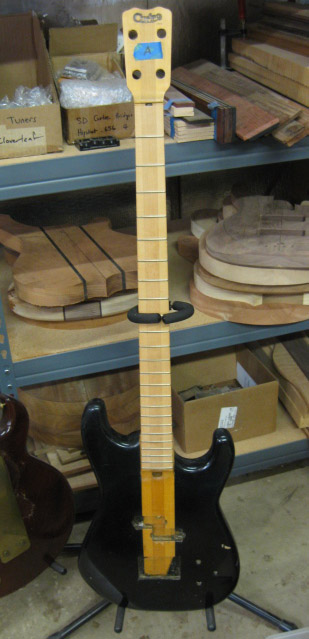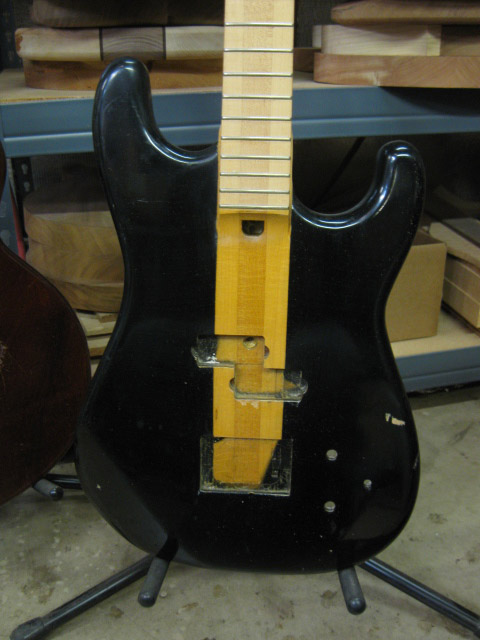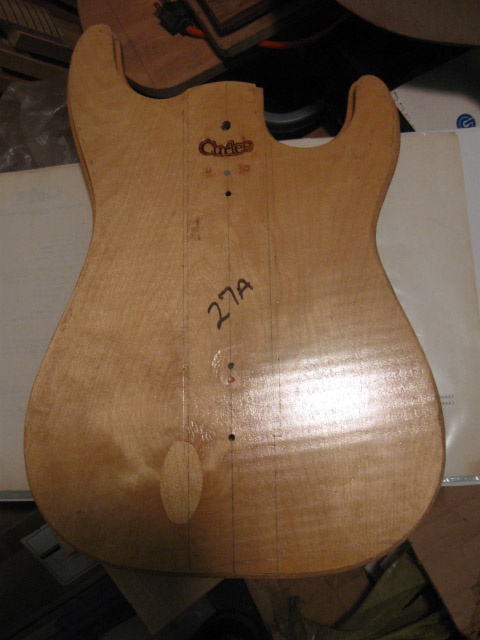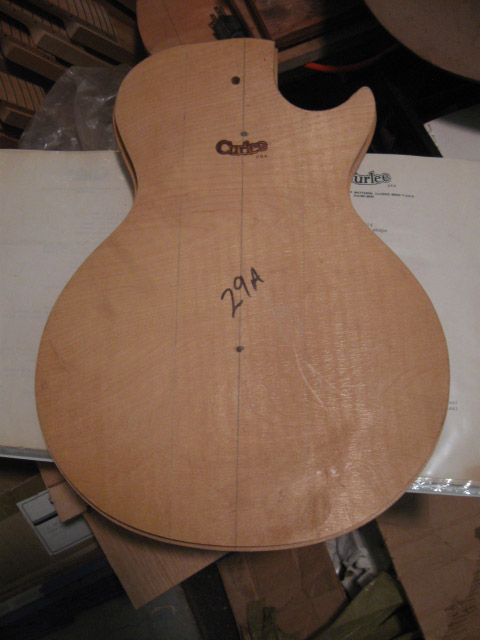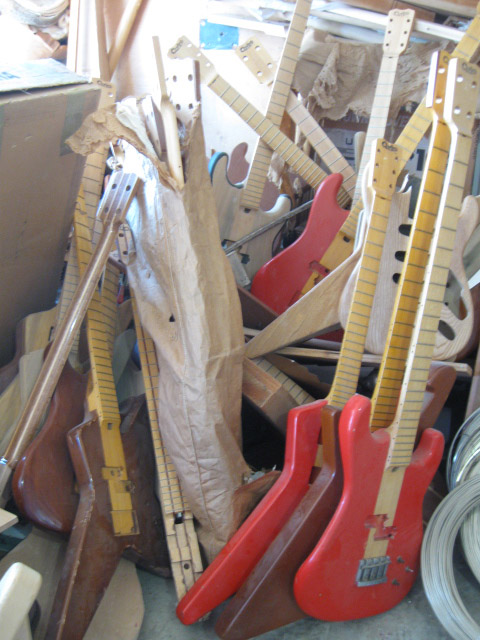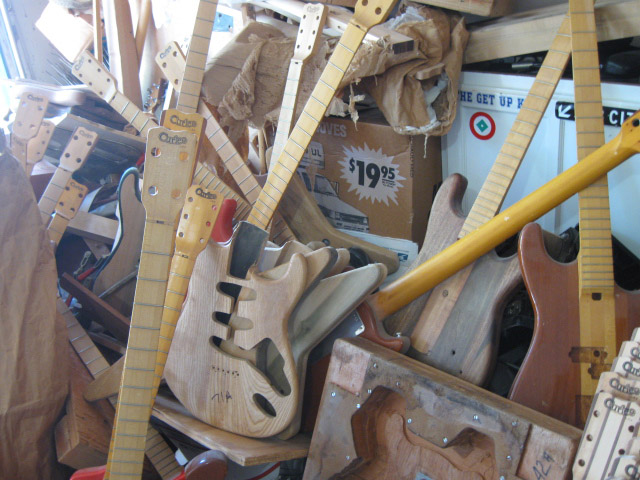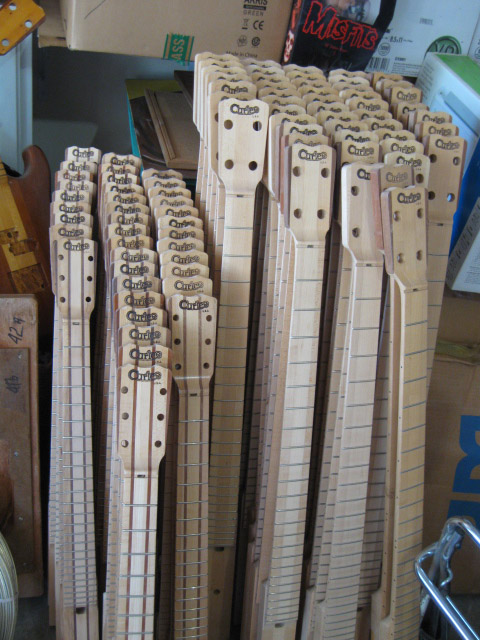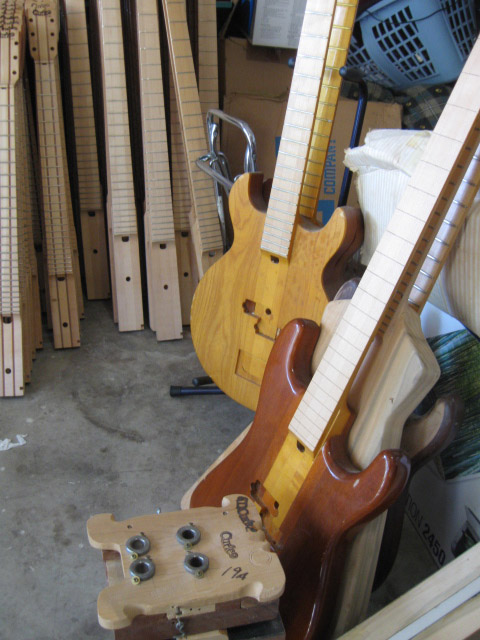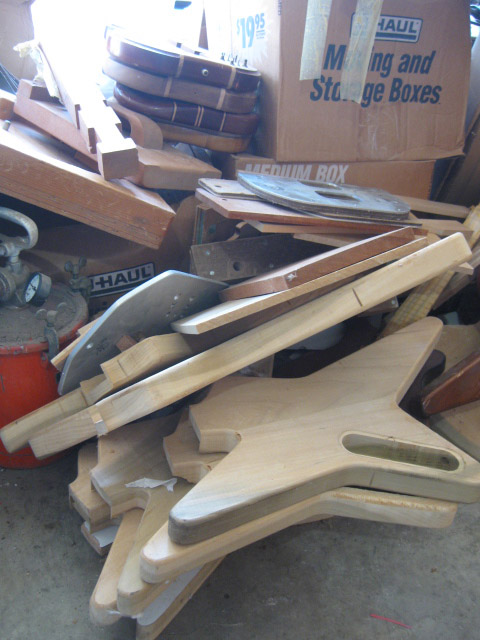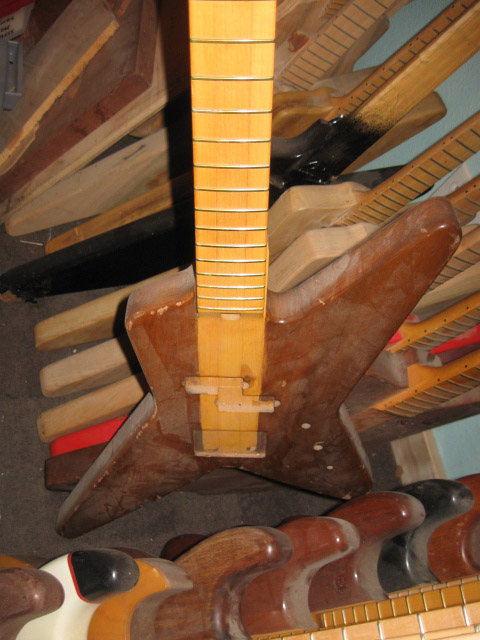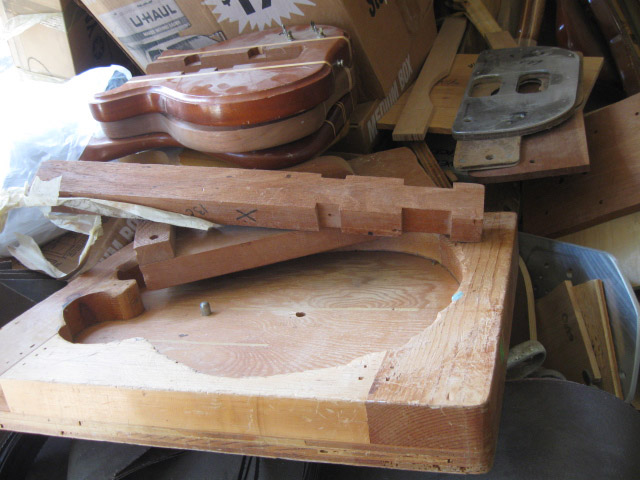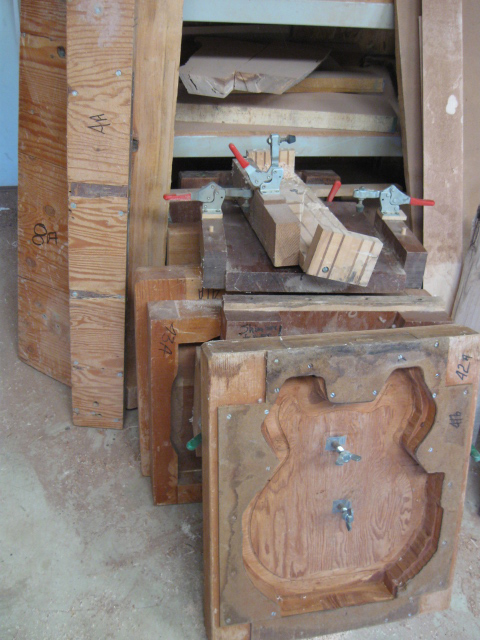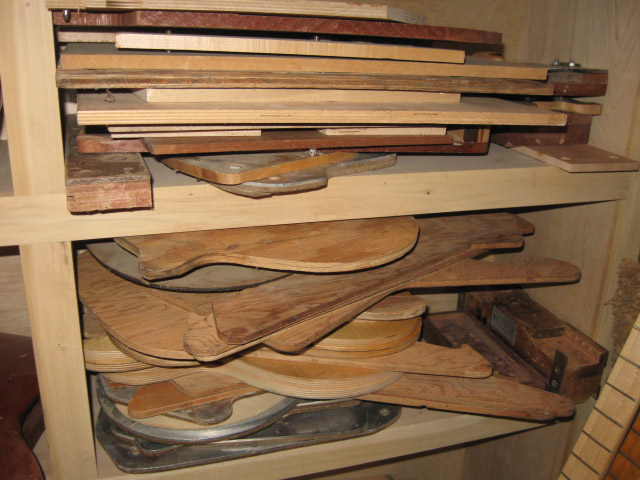*** PLEASE NOTE as of Sept. 1 our email is birdsongbass@yahoo.com. Thanks! ***
As of October 22, 2023 I no longer own the SD Curlee brand or have any parts for sale. Still a historian though… I interviewed the early AD GUY who made the SD Curlee ads! That’s coming too… plus more from Sonny Storbeck. I’m writing this all into a book about SD Curlee’s true history and the folks whose contributions have been overlooked for too long. More on that to come! ~Scott B.
The Whole Story*
* Please understand people remember things differently, independent of each other and sometimes even outside of when they could have possibly happened. It was a brief, intense time for them and a long time ago in their lives. There was only one man there in the first chapter from beginning to end and he is deceased... and even he played with the story a bit. This is an attempt to take a logical timeline built on years of instrument date & feature comparisons, part introduction dates (in other words if someone remembered working with a pickup in '76 that didn't exist until '77, respectfully we go with '77), and an overall understanding of how the instruments evolved, and drape first hand accounts and reference interviews over that framework. Done this way, it does fit together in a logical flow much more accurate and detailed than the old article in Guitar Stories, for example, or a Wiki page anyone can go in and revise from their one perspective (which happens). Physical evidence does tend to tie things together in a logical order.
My own decades of experience as a luthier & guitar builder, guitar shop & company owner, and repairman just plays in to provide a bit of reality as to how a shop works, what could have possibly happened - or not - and the behind-the-scenes understanding of reasons for certain decisions that may be obvious from this side of the bench, and help better tie things together. I've been a fan of SD Curlees since I was kid looking at their ads in '70s Guitar Player magazines, I've spoken with everyone around to speak with, and I own most of the original tooling, fixtures and templates. So now - with all of that cross referenced - here is how it falls together.
Understand it's never 100% but it's probably pretty close, and I do correct it as necessary as the pieces continue to settle into place. Thanks so much for your interest! ~Scott Beckwith, Nov. 2019.
*** SEPT. 2023: UPDATED WITH THE FIRST BIT OF MATERIAL FROM INTERVIEWING SONNY STORBECK, WHO IS ALIVE AND WELL. HE’S THE “S” IN S.D. CURLEE.***
QUICKIES: More detailed info on all of these in deeper on this page. But these are the questions we get and have trouble keeping up with, so here you go - thanks!
Dating my USA bass or guitar
Look for numbers on the pots - the first three are a factory code like 134 or something; the next two are the year. You’ll most likely see 77 to 81 as original era. If bridge is original, info is on this page. Serial numbers are just about useless.
Dating my Int’l bass or guitar
Haven’t cracked the serial number code but most likely late 1970s. They continued using the bent brass bridge past when the USA shop was.
Truss rod - tool - adjustment
We use a shaved down little 5/16 box end wrench. There is no perfect tool due to variance in installation & access cuts on the USA models. Truss rods are known problems on the ‘70s -early ‘80s USA basses. The guitars seem to have held up OK, and Int’l (Japan) versions are usually fine.
How much is it worth?
We don’t know, our focus is on today’s basses. Check reverb dot com and ebay, condition and playability play a huge role, as does confusing “Only 20% of production was guitars” with “ONLY 20 WERE MADE!”
Original pickups
On USA and Int’l (Japan) made, DiMarzios are original. Period. Bass: Either the early USA “brick” model one with the brass cover on the earliest Standards, or the cream model P on everything else. Lower line licensed import versions did get black P pickups, a handful of USAs got a cream J pickup by the neck, and a few very late (‘81-’82) black basses got black covered model Ps. Guitars: Single neck was one coil of a humbucker, drilled and mounted; bridge was a Super Distortion or Dual Sound (a Super D wired for coil splitting). On 2 hums the neck was like the bridge (if the poles are allen wrench) or PAF (flathead screw poles).
Original wiring
Sometimes great, sometimes an absolute mess. Here is a mix of very old scribbles and more modern notes from old basses. We wire them differently now, these are 76-82 only. Match by components you have (i.e., mini series/parallel switch or none, 1 or 2 pickups) and we hope this helps!
SD CURLEE HISTORY: 1975-2019
BEFORE WE BEGIN, a rough quickie vintage SD Curlee date reference for you. Here are the four bridges found on original USA SD Curlee & Curlee basses. If your bass is original, the first "crude brass" is 1976-77; "bent brass" 78-79; "Badass II" with poorly notched saddles (bridge is too wide), 79-80; narrower "Badass" countersunk into body, 80-82.
BEGINNING: 1975-77
An accurate history of SD Curlee would begin with three men named Storbeck, Dritz, and Curlee. Bassist and businessman Randy Curlee owned a music store near Chicago, Illinois and wanted to market some basses in the mid-'70s. Luthier / designer Randy Dritz and woodworker / pattern maker "Sonny" Storbeck were working on similar aims and prototyping instruments. Meeting in 1975, they decided to work together.
Storbeck: “In the beginning, Randy Dritz and I made a guitar and a bass, in my basement. Randy Dritz and Randy Curlee had gotten together, ‘Hey can you make this, can you make that’, so we ended up doing that. And as far as I know (those two) were never branded as S.D. Curlee guitars.”
Together they formed the S (Storbeck) D (Dritz) Curlee company in Matteson, IL. According to the instrument designers Dritz and Storbeck, the prototype bass had a sliding pickup. Dritz thought it may have been converted, Storbeck remembers it hanging around in the office for a while. “Then it wasn’t there.” The original "Standard" had mahogany body, deep tenon bolt-in maple neck, large brass covered DiMarzio humbucker. Notice the "It's Only Natural..." ad - the first neck and pocket went all the way down. The innovative "bolt-in" neck would stop under the bridge after that. Memories aside, this would HAVE to be 1976 because DiMarzio didn't make the Model One pickup (known as "the brick" in SD Curlee circles) until 1976. (Also notice the pickup rings on the guitar - production models used DiMarzio humbuckers with the ears hacked off and drilled for screws, and special single coils made from one coil of a humbucker, also drilled for mounting with no screw ears or ring.)
There were talks of Dan Armstrong's involvement, as he had a slide-in pickup design at the time, but this did not materialize. “Curlee went to England to meet Bill Wyman and Danny Armstrong,” offers Storbeck. “Comes back and says ‘Up theirs, we're going to do it ourselves.’ So either those guys REALLY like it, or they wanted nothing to do with it, and I never knew which it was 'cause he would never tell me. Those are the ones that had the sliding pickup on a track.” DiMarzio pickups are what came in all production SD Curlees (USA and the "Int'l" Japan-made import versions to come later) of the original era. The design for the guitars was there right from the beginning as well. The logo font? Selected by a secretary from those offered by the branding tool company rep! Amazing how some things that become iconic are such casual decisions initially. (The pickups on the licensed copies - the imports sold by others, not the INT'L series - are just Asian factory standard pickups. Most have non-adjustable poles and some are black.)
Jigs & fixtures were made (aluminum & wood - CNC in guitar making wouldn't be pioneered until 1977 by Peavey with their T60 guitar) and building began of the first hundred instruments (75 basses and 25 guitars) for the NAMM show. Again, this had to be 1976 to have the Model One bass pickup in them. (They were specially ordered without plating on the brass covers - these are actually replacements for Gibson EBs and the pickup - now black, #DB120 - is still in the DiMarzio line). There was no culture of independent luthiery, aftermarket parts catalogs or luthier supply houses in those days. Jigs were crude and techniques were improvised; the brass bridges were cast in the back yard barn of a farmer in Indiana who made tractor parts, then jig drilled & assembled in-house at the SD Curlee workshop. The bridge parts on the early crude bridges did not fit together correctly but Curlee said to go with what they had. Storbeck: “I remember something changed on (the bridges), the strings weren't lining up right, Dritz had to fiddle around with them. Those were completely, manually made. To me that was SUCH a clusterfuck. I'm like ‘Why are we drilling, and tapping, all of these holes in these little tiny pieces, when we could BUY them.’ I don't remember what we were paying just for the casting, and I had to drive to southern Indiana to get them! And I could not talk them into not doing that. I'm like ‘You guys are spending more on salary than what this bridge is worth, it's a piece of shit! Why are we doing this?’ (Curlee finally looked at the numbers and switched to the bent brass design.)
Further indications of a 1976 beginning date come from the U.S. trademark registration of SD Curlee USA. #1147148, filed for in May of 1979 and registered in Feb. of 1981, states a “First use in commerce” date of Mar. 1, 1976.
Storbeck liked to build heavy, sturdy things and this accounts for some of the instruments' substantial feel. Dritz designed the bass neck carve & nut width like a '57 Precision he had, and fretted directly into the neck wood like that bass (however into a theoretically more stable three piece laminated neck blank, Storbeck's contribution). The bridge was spaced narrow for minimal taper of the neck and strings from nut to bridge, like an Alembic; the body was influenced by a double cutaway LP Special. They built their own display for the big show and the company was launched.
In a published interview, Randy Curlee stated production began May 18, 1976 and the first bass had serial #518. "Production" doesn't mean huge assembly line, this was a workshop, especially early on. I'm taking an educated guess not many left the shop before late in 1976, if any, because I've never seen, nor verified with any owner of one, an SD Curlee - even the very early "brick" pickup STRING THROUGH basses - with matching original DiMarzio pots dating any earlier than 1977. The serial numbers were grouped by "series" but nobody alive remembers it. So instrument #4009 is NOT the 4009th instrument built. I had bass #1315, Standard with "brick" and crude early bridge, earliest batch with string-through, all original with 1977 pots. Company co-founder Randy Dritz has the same model with a high 3-digit serial number, also original, also with '77 pots.
Co-founder and instrument designer Randy Dritz was no longer with the company by 1977.
I owned a next-generation Standard II with DiMarzio P bass pickups and a more refined brass bridge that pot-dated to '77, serial #3008, so it could have been a late '77 or a '78 with leftover pots. I have never seen nor heard about an original "brick" pickup Standard with a set of original '78 dated pots either. From this I'd say "Brick pickup bass? 1977" - and that the changeover to the cream P pickups (and better bridges) happened internally in late '77, perhaps began shipping in early '78. The cream DiMarzio Model P was introduced in 1977, so this makes sense. (This also rules out any other models that only came with the cream P pickup existing before 1977).
Models:
Standard bass (original) mahogany body, maple neck, Model One ("brick") pickup under brass cover, string-through (early - then top-load), roughly cast and fit brass bridge.
Standard guitar with brass bridge, cream DiMarzio humbucker (ears clipped, drilled to screw directly to the wood) by the bridge and a single coil (literally one wrapped coil from a humbucker pickup, no mounting chassis) by the neck.
CHANGES: 1977-78
At this time the pickup was changed from the "Model one" to DiMarzio's new "hot" replacement P-bass pickup (Model P, still in the DiMarzio lineup - DP122, introduced in 1977) and the company grew. As the remaining owners were a businessman and a pattern maker but neither were luthiers, there were definite problems in ramping up production to meet demand with no shop leadership and inexperienced helpers.
Enter Denny Rauen. He was a young guy working for a construction company that ran the building SD Curlee was in, a player and ceramic artist with a natural ability for how things work. The workshop was battling a spindle sander they couldn't get working... "If I fix that sander, will you hire me?" He got it working in about 5 minutes, was hired, and within a year he was in charge of the workshop. Denny tweaked the basic design, retooled things, designed more jigs and systems and got it into smoother production. His influence during the peak growth years on getting good instruments built and out should never be underestimated.
He designed the "Liberty" bass to get some attention. (That's the SD Curlee bass that looks like an old telephone. Keep in mind this was the '70s and a bass shaped like a melting liberty bell wasn't all that far out.) They took some hand made versions to a NAMM show and... surprise, there was Hondo with dozens of them from a Japanese factory at half the price. Randy Curlee had already licensed the design to Hondo. This was another thing that started during these years - Randy Curlee figured if he was going to get copied (the Japanese companies were copying everybody at this point), he would arrange it and get paid through licensing deals and import versions he could sell as an "International" line of SD Curlees. He was one of the (if not the) first to license and purchase overseas copies of a company's own designs for a lower line - a business model now followed by most big guitar companies and many independents. The flipside of this, though, is he was competing with himself. This was an all new approach at that time.
Denny spoke of his shock at the show of seeing import versions of his design over at the Hondo booth. Storbeck remembers being gone by then, but does remember the whole import thing happening. “When I went it was strictly SD Curlee. I hated that, I couldn't stand that he did that, that was another part of the whole crack in the armor for us, that he would do that. Here (Dritz) and I are in the shop, we're trying to design shit, come up with shit, build shit, and as soon as it gets rolling some guy walks in and offers him a (deal), and he does it!” (Randy Curlee licensed the design to a dozen different companies, every way possible.) “I know. And he didn't design it. Dritz will agree with me on that, he'd say ‘oh I like this or I like that, can you guys change this, can you guys change that.’ But the whole total thing, no. So, when he DID that, I'm like ‘you started out, you told both of us that you wanted a guitar MADE IN THE UNITED STATES in the little town of Matteson Illinois, average priced so that the average guy could buy a good guitar. That's what you told us. Now you're doin' THIS bullshit? That to me was not what you told us.’ You know, I'm all on board with this little shop, like YOUR shop. Man, that's coming from this guy, IN Texas, he's putting his heart and soul into making this instrument the best he can, so when YOU play it, you ENJOY playing it. And then, the next thing I know, here come all the (imports from Asia).”
Arrangements were made with the Matsumoku factory in Japan for the models branded SD Curlee "Int'l" and through Hondo for "Curlee Design" and "Aspen" series, down to early Korean product wholesaled by Global through other stores including an auto parts chain. No one knows the serial number code or how many were made. I had 2 "Int'l" Liberties ser #0070117 and 0070120. My guess is the first numbers are a batch number or the year; the last numbers are likely that bass' number in the run. Japanese pots don't have date codes, but they (and all the Int'l basses I've seen) have the brass bridges from late '77-78 on them.
Nobody is sure how many USAs were made either; the quoted figure of 15,000... now, I own much of the old tooling & jigs and have run my own guitar companies' shops for 16 years. There is absolutely no way on God's green earth they built that many with the shop, tools, and process they had, in the time it lasted. Plus it has been brought up by people that were actually there that the numbers were embellished to look like more than actual production. Fudging shipping numbers would also help in ones dealings and banking negotiations... I'm not saying this IS what happened, but I AM saying the numbers were very much on the high side. I'd say 15,000 INCLUDING every bass ever made under license or imported would STILL be high, by a factor of three or four. Dritz can’t imagine anything even close to that. When he visited Birdsong, he said it was very similar. Having visited where the old SDC shop was, I can tell you it was VERY similar. And it took Birdsong 18 years to make a thousand. We had half the people at our peak, but went four times as long. So 15,000? Storbeck: “That's completely ridiculous. I'm thinking if it even got close to a thousand, Scott, seriously. If it even got to a thousand I would be surprised. I don't know the exact number, but if someone said to me ‘Well I know for a fact there was a thousand’ it wouldn't surprise me. But when somebody says FIFTEEN thousand, there's no fuckin' way in hell, NO WAY IN HELL, that that happened.” And that’s the guy who designed and made the tooling.
I think 5000 would be more realistic, factoring in all the imports and licensed copies made and everything. Storbeck: “That right there would floor me. Even with the imports. Of course I don't know how many Randy brought it, they were coming in by the truckloads.” So, Storbeck sees under a thousand USA, Dritz sees around that, Rauen says “25 a month when things were running smoothly” which was rare and only during portions of his time there… which sustained would be 300 a year, which is absolute chaos in a small shop. If we adjust that back to 1500 I think we’re being generous but far more close to reality.
There were parts of the production process that were extremely dangerous, that wouldn’t fly in a maximum-production factory. The bit that carved the neck in two passes - in a hand held router - was one. “It was all trial and error, says Storbeck. “Drilling those bridges, I'm like, Jesus Christ. You know what happens when you go in the drill press and the drill catches? That piece starts spinning. Oh my gahd there were so many times I thought (Dritz) was gonna lose a hand. And breaking taps. Jesus, God. And especially that little tiny hole where you put two in to raise or lower the bridge piece? That little tap? Jesus, man. Then you gotta throw that part away because you ain't EVER getting that tap outta there.”
The serial number system was further confused by "...some of the Fender thing happening, where there was a bin of numbered plates and someone was supposed to keep track of it but it never really happened." Numbers were on the bridge until the change to Badass bridges, then they were on the brass (and later aluminum) plate that held the body to the neck. As I've been gathering information, there appear to be huge gaps in the serial numbers. This would correspond to a first number being a "series" rather than however many thousand.
In the world of SD Curlee, sometimes just making the bass out of different woods constituted a new model name; I and II were used to identify single and double pickups. (For you non-techies - a P-bass pickup, though 2 separate coils are visible, is considered “one pickup” because they’re wired together as one). At some point the second style bent brass bridge of the bass was changed to the Badass II, which didn't fit the narrow string spacing at the bridge very well. The notches realigning the strings, the basses left the workshop like that. There is an ad referring to a 2-pickup Standard as "Pro Bass"... it gets confusing.
Neck blanks, 3-piece Maple, were glued up and rough dimensioned out-of-house from around '77 on. Guitar production was about 20% with the rest basses.
Model additions:
Standard now had cream DiMarzio pickup (I) or pickups (II)
Butcher: A Standard with body of butcher block Maple (around 14 pieces glued up), Maple neck
Liberty: The one that looks like an old telephone; it's actually a liberty bell. Designed by Denny Rauen.
When we revived SD Curlee, Denny was a source of info and memories and out of respect for all he did for the brand and the huge role he played in its history, we returned to him the original templates and ownership of this model. USA Liberties are VERY rare; “Int’l” versions less so but still unusual to find. The last was a Curlee USA branded (we’ll get to that) incomplete build from the early ‘80s we found and that was sent to Denny.
Group photo:
(Top row L to R) Paul Wieg, Jack "Hawkeye" Daniels (lead guitarist of The Shadows of Knight), Vicky Maker, Larry, Randy Curlee; (Bottom L to R) Sonny (Homer) Storbeck, Denny Rauen, Mike Zyer (Image & names courtesy Denny Rauen)
PEAK YEARS: 1978-80
Quick tips:
Brass plates switched to aluminum during 1979.
It appears 1978 - 1980 is when a majority of the SD Curlee USA instruments were built. I'm going by the date codes on the pots - the vast majority of SD Curlee USAs I've owned, seen, seen pictures of, and date-coded for owners have DiMarzio pots (and features) that date to these years. Basses from this era mainly had Badass II bridges with re-notched saddles and leftover second-style brass bridges. I've only seen the Int'l basses having brass bridges, and the guitars only had their version of these. These bridges were made by Gary Kahler's company before they became famous for their tremolo.
Here are some pictures of a Standard II I owned - serial 3008, brass plate era, completely original, the Kahler-sourced bridge mentioned above which were used for a very short time, pots all date to 77. So it could have been made in 1977 or after, but definitely not earlier.
Around '79 original Badass bridges replaced the Badass IIs. The IIs were designed for Fenders; the height was good but the string spacing was wide. The original Badass was for Gibsons - so the string spacing was much better (narrower) but they were too tall - this is where we start to see SD Curlee basses with countersunk bridges.
Many model names and variations happened and I hope to slowly unravel them over time and expand the information on here. The constants were DiMarzio pickups; they did NOT come with Alembic or other brands. Even at their peak, shop manager Denny clearly remembers the company fudging the numbers for publicity while struggling at 25 per month out of the USA workshop "...when things were running smoothly..." An office source disagrees, but between Denny's description and my own experience running Birdsong Guitars in a similar manner to their old USA workshop, as verified by Randy Dritz during a visit, I can verify that as a lot closer to the truth than numbers on a piece of paper that (respectfully) may have been seen in an office for one reason or another.
New SD Curlees of this era generally sold for $500 - $1000, right in line with the USA Gibsons and Fenders of the time. Keep in mind in the '70s you could also buy a 4-bedroom house for what a pickup truck costs now, median household income was fifteen grand a year and gas was under 50 cents a gallon. $500 then is 3 grand now... the only things today that cost what they did in 1975 are made cheaply in China. In fact, most of what America WAS making in those years is no longer made here at all. We don't even have the factories anymore.
The instruments were shipping world wide. Vicky (Sonny Storbeck’s sister-in-law, as he was married to her twin sister) handled the office and eventually married Randy Curlee: "Randy exported the guitars to Italy, Germany and Belgium. He also imported HiWatt tube amps from England and distributed them in the U.S."
Sonny Storbeck left around '79. “I'm not sure when it went down because (it was a tough time personally).”
I asked “Do you remember what bridges were going on the instruments at the time you left?”
“I had convinced them to stop with the casting bullshit; I was there when we were taking them out of the box and screwing them on the guitar.”
“Were you there when the switch to BADASS II happened?”
“That, I don't remember that. I might not have been there for that. What year was that?”
“Late 78 into 79.”
“That's about when I left. I'm pretty sure that's about the time I rolled out of there.”
Sometime in '79 the switch was made from brass plates to small numbers in chrome, then full production in aluminum. The control cavity shape changed. We have the samples and patterns of these. In about 1980 the S.D. Curlee logo was replaced with just Curlee. Denny Rauen, frustrated at business decisions that undercut themselves and non-builders changing designs and procedures, had been courted by locals Dean Guitars, eventually leaving SD Curlee in 1980.
Model additions:
Summit: A Standard with Walnut body and neck (both with twin Maple stringers)
Curbeck: A Standard with Walnut body (twin Maple stringers) and Maple neck (twin Walnut stringers) The name is a contraction of Curlee and Storbeck.
Yankee: Around '78 on - slightly asymmetrical horns, concave cut in bottom
Guitars: Standard I (single & humbucker); II (two humbuckers); III (3 singles - have never seen one).
P/J setups were now offered on the basses but are very rarely actually seen - much like the "active electronics", there were actual preamps - SDC has a box of them NOS, no markings, possibly "Starz Guitars" - but how many were installed? Who knows? We have never seen one in an SD Curlee.
Oddities of the "S.D. Curlee" era:
Separate fingerboard neck - I've only ever seen one, here it is - a neck from the later countersunk bridge days (used after hanging around a while?) that has been finished, routed & installed - but was in the batch of necks in the "Curlee cave" score (we’ll get to that). It has serial # 4572 stamped into the back of the headstock. Original-era SD Curlee / Curlee instruments had 3-piece neck blanks that were fretted directly into like a Fender 1-piece, they did not have separate fingerboards.
ENDING
Production slowed as times and tastes changed in the early 80s. Denny came back to help out a few times but by 1982 SD Curlee was essentially done... ironically just as MTV began airing a Night Ranger video with Jack Blades playing one, and Alec John Such of Bon Jovi. But paint, points and plastic were the next trend and the organic, natural look of the SD Curlee was not any of those. Changes were being made though, as evidenced by the new models of the early 80s, some set-neck, and the finishes.
"Curlee" instruments of this era (the logo was changed since "S" and "D" were no longer with the company) experimented with painted finishes (Denny painted a few in his basement for Curlee after leaving the company, he remembers them as "Candy apple" - SDC has one, the only one I've ever seen or heard of. It is an incomplete build with a red painted neck, Maple fingerboard, and black faced headstock with white logo). There were issues with the durability of their early Watco oil finish, and Randy Curlee invested in a DeVilbiss spray booth to branch out into colors for the guitars, "...some of which were painted red and others yellow." Black seems to be most seen, but if there were a few hundred set neck painted Curlees I'd be very surprised. Fiesta red and black have turned up, and one uncompleted trans-yellow maple-topped Standard.
From the looks of things, there was a definite retooling going on into pointy guitars and basses, and what were referred to as "Strat" (P-style body) basses, just before the end. There are patterns & templates for Strat and LP guitars even! They were planning on painting most of them, as many of them are Poplar - a wood usually not visually appealing and therefore painted over.
Oddities Of The "Curlee" era:
The only "topped" Curlee we know of - a very Hamer-like maple topped, squared-edge Standard, '80 I'm guessing because it's a bolt-neck with fake cover, aluminum plate era, countersunk bridge. I know Hamer was nearby, but when you begin to copy your imitators (Hamer's round-butt double cut was introduced in '78 - and yes, we know they were both heavily Gibson Jr. influenced) where else is there to go? This is NOS never completed. Three Star basses, all poplar, all set neck with no plate - a II left before pickup & bridge routs; the "last original" still taped from painting; a completed I with rare black pickup, knobs, and Schaller tuners (formerly owned by Alec Jon Such of Bon Jovi). Next are three "Curlee"-era backs - bolt-in with aluminum cover plate, set-in with false aluminum cover plate, set-in with no plate. This all happened within a year or two. Strange colors (all uncompleted NOS): A Fiesta Red Strat bass, the metallic red Strat bass with black headstock & painted neck, and a black "Strat bass." (Fender, please don't sue me. That's what they called them in '80.)
The first pic is a NOS DiMarzio Strat body. DiMarzio was a long time supplier of SD Curlee pickups & pots. 2nd pic is a body template for a Strat. I also have a routing template for the cavities pulled from this DiMarzio body... and an uncompleted mahogany Strat body in with the NOS stash. One can add this math up easily - early '80s Curlee was doing R&D on a Strat copy offering. There is a set of LP body templates as well.
How the pieces fit together to me:
Having the experience I have in guitar company ownership, workshop functioning, and retail - and having come of age in the early '80s way into the gear of the time - and having most if not all of what was left in production (and the templates & tooling) at SD Curlee in 1982, AND being the only person who has spoken with the handful of original-era people around (some of whom still don't speak to each other)... sifting through all of that, here's how it looks to me. I'm going to say (with much respect to all involved) there was a certain amount of changing fashion, difficulty in adapting the product line, some very questionable management & financial decisions and competition from its own imported lines that all contributed to the decision to close up the original shop in 1982.
I'm also, regarding the early years, going to say a trickle of instruments happened through '76 - probably the initial hundred into '77 - and, ramping up through '77, they found their groove heading into '78 with the cream pickup era and Denny Rauen.
The company including remaining stock of necks, unfinished bodies & instruments, parts & tooling was sold in 1984. In January of 2013 the resurrected SD Curlee USA company located & acquired this entire stash, pretty much intact; let's just say I was flabbergasted when it turned out to be an hour from the new workshop in Texas! From the looks of it, it was a pretty quick closing & pack-up. We have instruments that were literally pulled half-done from the finish booth, and I'm very familiar with what work areas cleared by the ol' forearm into box method looks like. I've also talked to clients who had instruments in for repair and suppliers of that time.
Victoria, who worked in the office from Fall '77 through the end (and married Randy Curlee in '82, went to high school with Randy Dritz AND Sonny Storbeck was her brother-in-law) offered that the closing of the company also had to do with the economy of the time: "Randy closed the business in 1982 due to sky-high interest rates during the recession of the early 80s which made it impossible to borrow against accounts receivable. Randy and I married, we packed up the all the guitar parts and moved to San Antonio, TX because he had taken a position with Yamaha as the District Manager for TX, OK, LA, and AK."
Thus solving the mystery of why I found the stash an hour from my shop! The man who bought the rights & stock and stored it in San Antonio, TX for almost 30 years wishes to remain anonymous. He was a sales rep for a music accessory wholesaler and was going to restart the company but found "Repping parts and accessories was a hell of a lot easier than building guitars." He was a quiet, retired man who was happy to see the lot go to someone excited about it, also probably VERY relieved to find someone who knew what it all was and was willing to buy every scrap. (Please note, we do not make our new basses from these old parts. We did some "Heritage" builds with some, clearly sold as such, but the new SD Curlees are made to different spec by different shop processes and with MUCH better parts. Any of the stash for sale would appear on the inventory page.)
Victoria: "Randy was promoted by Yamaha to head up their Drums, Guitars, and Amps division in Buena Park, CA, so we moved to Orange County. He was very successful in this position and managed all aspects of the division including overseeing much of the advertising while recruiting many top name performers to be featured in the commercials and ads that he coordinated. He had a knack for connecting with other musicians due to his love of music. Randy was a true entrepreneur and always looking for an angle. But his entrepreneurial drive made him restless, and despite his success, he wasn't very happy working for other people and always longed to run his own business. He ultimately left Yamaha and joined Peavey Guitars where he worked until he passed from complications of diabetes at the age of 56. Thank you for keeping S.D. Curlee alive. Randy would be thrilled."
Donations from instrument sales by the resurrected company were made to diabetes causes in memory of Randy Curlee.
Randy Dritz is still fixing things & doing instrument repair in Illinois.
After leaving SD Curlee Denny Rauen worked at Dean where he designed the "Dean Baby" series and such innovations as multiple radius ("Compound radius") fingerboards. He then began a thriving independent luthiery career, currently based out of Milwaukee.
Homer Storbeck is a mystery. The more people who knew him I talk to, the less I actually know about where he went... (UPDATE 4/26/19. Homer’s grandson informed us he passed away many years ago and had no further information.) (UPDATE 5/27/23. I just got off the phone with Sonny, so evidently he’s not!)
It's important we establish the true history of this company because the people involved were some of the first doing what they did and, despite the struggles, put out some amazingly cool, iconic instruments with their own look, sound & legacy. Though never a household name, these basses and guitars have been on stages, in studios, in videos, and played and collected by die-hards with a taste for something different worldwide for 40 years.
Noted SD Curlee players included:
Jack Blades of Night Ranger (whose post-Curlee Hamers bore quite the resemblance...)
Alec Jon Such of Bon Jovi (We have one of his.)
Bobby Watson of Rufus
(We're still digging... remember this was pre-computers, pre-MTV mostly, so pics are hard to find!)
Special thanks to Randy & Suzy Dritz, Denny Rauen and Victoria Maker for their recollections!
SD CURLEE USA: continuing the legacy
In 2010 as a devoted SD Curlee enthusiast, the growth of Birdsong Guitars allowed Scott Beckwith (me) to resurrect mostly a bass design that never got its due in development but also an innovative American company that left too soon. I felt the SD Curlee bass never got the continued refinement it deserved and the folks truly behind it never got the credit they deserved. My pursuit began with the idea of working up a tribute model and ended up with a rebirth of the company! With encouragement from Randy Dritz and Denny Rauen (and others), we used the best of my collection for patterns, re-engineered things (from better headstock angle to slightly shorter scale length, stronger neck construction and truss rod, better wiring and shielding, and so on), kept the visuals and vibe, and built them like high-end hand made boutique basses… because that’s what we do.
The easy thing to do would have been to ship a good '78 off to China and order 200 with the name burned onto the headstock again. Lots of people do it, weird '70s ergonomic issues, problems revealed over 30 years of use and all. "Re-issues." I wasn't into that. I wanted this to be a continuation. During a visit, designer and original company co-founder Randy Dritz called what we were doing "What I'd liked to have done with the originals had we been capable of it." 2011 to 2015 were years of pushing the envelope with evolutions of the designs - we continued exploring into set necks and super high-end fancy builds. Along the way we refined the scale again for playability, went back to bolt-on (short-tenon in a very tight pocket) and worked ourselves back towards the traditional shapes - but with better balance AND less weight, and all the high-end attention to detail and QC. While working out the balance and focus of the basses, we found the balance and focus for SD Curlee. The old ones were fine for their day, but heavy and crude by current standards; the recent SD Curlees may look very similar and still have the same huge tone, but in how they feel and play, there is simply no comparison.
”Texas era” models (more info to come):
Standard: Update of the iconic original bass, available in 76 (brick pickup) and 78 (cream P) versions. Same DiMarzio pickups, updated necks & scale.
Yankee II: Flagship fancy model with the ‘70s SDC look of stringers and German carved slightly offset body, updated a bit for balance & upper fret access, two Dimarzio P pickups.
There was still no factory, no assembly line. We BUILT them. As we could; Birdsong kept the hands very busy... perhaps there will come in SD Curlee’s next chapter the opportunity to be promoted and produced. It was quite a run resurrecting the brand and getting to play a part in the history.
Scott Beckwith
VINTAGE SD CURLEE FAQ
What year was my vintage SD Curlee made?
Best way to date one is by the pots - an original USA SD Curlee will have DiMarzio pots with numbers on them. 137 or 134 will ptobably be the first three; the next two will year date the pot. The pot will predate the bass, but not by much. So a pot with 13777 I'd say 77 or 78; 13778, 78 or 79 etc.
Other than this, rough dating by bridge (read company history above for more details):
BASS rough cast crude brass (with brick pickup) 1976-77
BASS bent brass with round barrel saddles 1977-78 (all Japanese "Int'l" basses had these)
USA / "Int'l" GUITARS all had bent brass bridges except for maybe the first few USA - date the pots.
BASS Badass II 1979-80
BASS Badass (original, countersunk into body) 1981-82
I have never verified by pot date info or in-hand any SD Curlee earlier than '77. Anything earlier than that would be a Standard I with crude cast bridge, original pots dating to 76 or earlier, with original components that were being produced at the time. I know some folks think their bass is from 74 or 75, they'd swear that's when they remember buying it, but listen - if you've never had it rewired and the pots were made in 78, and that cream pickup wasn't made before '77, hard evidence shows that bass couldn't have existed earlier. Don't take it personally... it's not a '74.
What does the serial number tell me?
We're still trying to crack the code - nobody alive remembers. It's not an accurate build number, this we know. I'll start listing some from my collection & files and we'll see if we can find a pattern.
_ 32 - SD Curlee - Std I (brick) - pot date 77 - bolt-in - brass plates - crude bridge string through.
612 - SD Curlee - Std I (brick)
1210 - SD Curlee - Std I (brick) - same specs, '77 pots
1218 - SD Curlee - Std I (brick) - same specs
1315 - SD Curlee - Std I (brick) - pot date 77 - bolt-in - brass plates - crude bridge string through.
1316 - same specs as above, '77 pots
1357 - same specs as above
1365 - same specs as above
2636 - SD Curlee - Std I (rev. P) bent brass bridge 77 pots
2778 - SD Curlee - Std I (brick) but has bent brass bridge
2779 - Same - in Germany
(All basses from here have cream pickups)
2824 - SD Curlee - brass plates
3008 - SD Curlee - Std II - pot date 77 - bolt-in - brass plates - bent brass bridge.
3908 - SD Curlee - GUITAR - pot date 79 - brass plates
(unknown ser.) - SD Curlee - pot date 79 - brass plates - Badass II bridge (LC)
4017 - Butcher block maple body Standard II - brass plates, 79 pots, Badass II bridge
4055 - also has the Badass II bridge
(unknown ser.) SD Curlee - pot date 79 - aluminum plates - Badass II bridge
4366 - SD Curlee - Yankee II - pot date 80 - aluminum plates - Badass II bridge
4560 - Curlee - Std II - aluminum plates, Badass bridge
6287 - Curlee - Strat bass I - pot date 80 - set neck, false plate - aluminum plates - Badass bridge.
How much is my old bass worth?
Hard to say - check SOLD listings on Reverb and selling (not asking) prices on ebay.
Where was my vintage SD Curlee made?
If it says USA on the headstock it was made in Illinois; "Int'l" it was Japan. "Aspen" or other, either Japan or Korea. "Global" versions, Korea. There was a lot of licensing of this design going on worldwide. (Anything that says Texas USA is 2011-2022).
What were the original parts?
On USA basses, the tuners were Grover Titans (still available in chrome through AllParts) - pickups were DiMarzio Model One ("the brick" is still available through DiMarzio but the covers are black - we special order some in aluminum to go with the chrome hardware) or cream Model P pickups (still available through DiMarzio). Cast and bent brass bridges are no longer available (recommended retrofit is the Hipshot Style A in unplated brass, .656 spacing). Badass II bridges and original taller Badass bridges are around used but getting hard to find - they haven't been made in years. Recently "inspired by" bridges have made an appearance but I have no experience with them. Pots were DiMarzio 500K, long threaded Switchcraft barrel jack, Switchcraft 3-way pickup toggle... all available from sources.
What size allen wrench adjusts the Badass II bridge?
.050 inches.
NECK...
My neck is warped, and...
Truss rod issues are known among the old USA SD Curlees & Curlee basses. The necks were mostly OK but the rods weren't up to the task and sometimes they were installed with little access or with no adjustability left. The adjuster is actually a nut, and is notoriously difficult to get to. I took a tiny 5/16" wrench and ground down the box (closed) end until I could get it in and around the nut with enough room to turn it. Another solution is to take a truss rod wrench of the kind used on USA Gibsons (looks like a corn cob pipe) and grind it away 'til it fits in the cavity and on to the nut.
This all gets you to the point where you can see if the truss rod even turns. You will turn to the right... if it doesn't move, try a little to the left first. Firmly but gently. If it goes left but then stops going right, it may be bottomed out - you'll need to undo the nut and place another / more little washers onto the threaded end and then somehow get that nut started back on it.
For a bass that has been left been unused and extremely out of adjustment, loosen all the strings. Adjust the rod a quarter turn at a time. Quarter turn, rest; quarter turn, rest. If it takes a full turn maybe let it rest overnight. You must gently bring it back. It may have never been adjusted due to the difficulty/bad design. It may take a few turns. Set it straight, then add back in the string tension. It'll bow again, but not as bad. Repeat process until you can tell how far to "over tighten" that will let the strings pull it straight.
SD Curlee had to make their own truss rods and they never evolved past the original design; some didn't work NEW once they were put in less than perfectly. Keep an eye on the skunk stripe in the neck up by the lower frets - a known (in hindsight) weak point. A bad one will begin to pop that out rather than straighten.
This all is THE main frustration with old USA SD Curlees. - for me as an enthusiast of them, and then the first thing I re-engineered on the modern ones when I became the company. I have old SD Curlees that are rock solid and others that never had a chance. It all came down to the installation of the rod and initial adjustment.
Hope this helps you - just don't be aggressive with it, old glue and old wood and old threads... firmly persuade it instead if that makes sense... lean into it, don't hammer it. If the rod is broken or stripped there's no real repair. I have fresh NOS uninstalled necks but the work involved (fitting - routing - finishing) is not worth it unless the bass has a lot of sentimental value to be played. Modern ones, along with upgrades in every area of parts quality and every step of the making, have an easily accessible heavy duty two-way truss rod. New neck do not fit the old basses.
Is it worth restoring?
If that's what you want to do with your old friend you plan on keeping and handing off to some other worthy hands as you depart this mortal coil, yes. If you're looking to turn it for a profit, no. Put the parts on ebay for others and hang it on the wall.
TESTIMONIALS (TEXAs-ERA SD Curlees)
"A BIG thinks to all the talented craftsmen at SD Curlee for building such a fantastic instrument for me. My new bass arrived today and looks just as good as it sounds! I couldn’t be happier… it truly is a great instrument and everything I hoped it would be." ~Dale
"Well, Scott, you and the fine craftsmen there did it again. The bass is beautiful. You hit it right out of the park. Simply amazing. Thanks!" ~Scott C.
"It is absolutely gorgeous!!! Well worth the wait for such quality and craftsmanship. Will look real good next to my Cortobass!!" ~Jack
QUESTIONS ON TODAY'S SD CURLEES
Why the change in neck construction? Why change anything?
The "bolt-through" was an interesting approach. By '81 the original company had gone to gluing them in, and we tried both ways over our years with it and finally gave in to the advantages of a regular bolt-on mounting into a really tight pocket when we re-introduced the Standard model. In trying to make pockets tighter, make the bodies less heavy, and get the overall instruments to a higher level of consistency and finish than what can be seen in any sampling of old SD Curlee and Curlee basses, the long tenon method worked AGAINST these during the build process... being as we're here to build the best SD Curlees we can NOW, we changed for the better. Right in with the stronger necks, the easier playability, the better balance, the 2-way truss rods, the better shielding... on and on. While retaining everything we can of the original Randy Dritz design, today offers improvements that 1975 couldn't dream of... and as they are worked in to work out the issues, things change. Most you don't see but some you do. Though a huge fan first, I have to keep reminding myself this is a continuation, not a nostalgia act; I'm a huge fan of the old stuff and could have easily imported exact copies - issues, shortcomings and all - and marketed the hell out of them as re-issues. That's not how I as a luthier am supposed to respect the company, design & legacy. ~Scott
